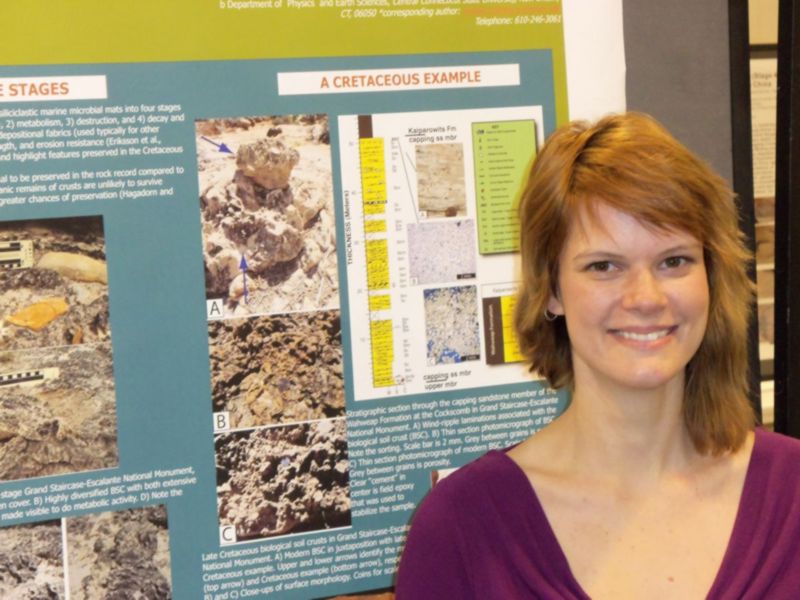
 Morphological variation and experimental
compaction in the Colorado Plateau biological soil crusts:
Implications for their possible recognition in the rock record
Morphological variation and experimental
compaction in the Colorado Plateau biological soil crusts:
Implications for their possible recognition in the rock record
 Morphological variation and experimental
compaction in the Colorado Plateau biological soil crusts:
Implications for their possible recognition in the rock record
Morphological variation and experimental
compaction in the Colorado Plateau biological soil crusts:
Implications for their possible recognition in the rock recordMalenda, H. Fitzgerald, Simpson, Edward L., Wizevich, Michael C., Tindall, Sarah E., and Boling, Kenneth S., 2010, Morphological variation and experimental compaction in the Colorado Plateau biological soil crusts: Implications for their possible recognition in the rock record [abs]: Geological Society of America - Denver Annual Meeting (31 October –3 November 2010).
 Biological soil crusts (BSCs) are a
ubiquitous and crucial component of modern dryland ecosystems and
probably the first community-type to colonize the Precambrian land
surface. BSCs are complex symbioses of cyanobacteria, green algae,
mosses, lichens, and fungi, and have adapted to intense UV radiation
and drastic modifications in precipitation and temperature. BSCs,
although they were certainly successful in the Precambrian, are
underreported in the rock record conceivably due to the crusts’
inconspicuous appearance. This BSC study reports on the
morphological variation in a modern setting (Grand
Staircase-Escalante National Monument) and preliminary compaction
experiments in order to aid the identification of BSC in the rock
record.
Biological soil crusts (BSCs) are a
ubiquitous and crucial component of modern dryland ecosystems and
probably the first community-type to colonize the Precambrian land
surface. BSCs are complex symbioses of cyanobacteria, green algae,
mosses, lichens, and fungi, and have adapted to intense UV radiation
and drastic modifications in precipitation and temperature. BSCs,
although they were certainly successful in the Precambrian, are
underreported in the rock record conceivably due to the crusts’
inconspicuous appearance. This BSC study reports on the
morphological variation in a modern setting (Grand
Staircase-Escalante National Monument) and preliminary compaction
experiments in order to aid the identification of BSC in the rock
record.